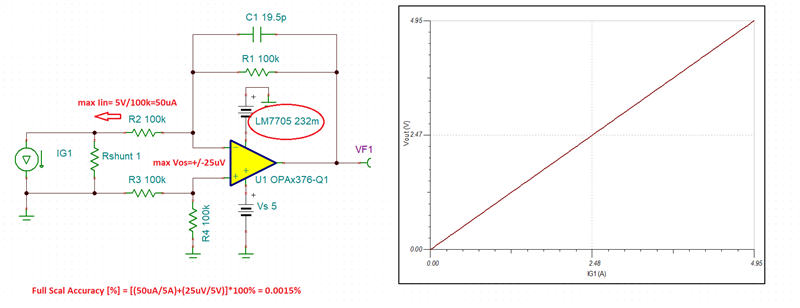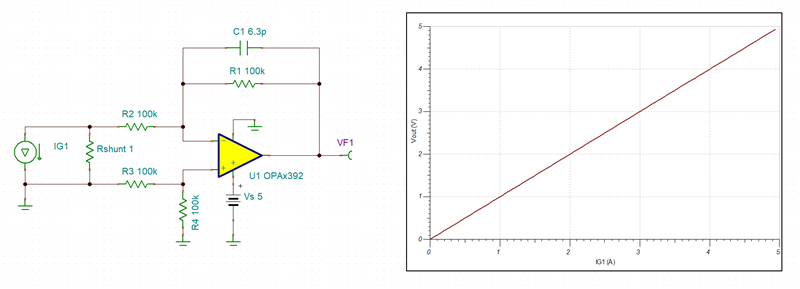Other Parts Discussed in Thread: LM7705, OPA376, OPA392
I have a question.
In typical current sense amplifier use, how much would its accuracy be?
I would like to compare to DRV871x current sense amplifier accuracy.
This thread has been locked.
If you have a related question, please click the "Ask a related question" button in the top right corner. The newly created question will be automatically linked to this question.
Yuya,
What is your typical current sense application? The accuracy is a function of several factors like circuit configuration, input current magnitude (input voltage range), tolerance of the resistors, max offset voltage, gain, noise/bandwidth, precision of reference voltage, etc. and for these reasons one may not be able to give you a simple answer.
For high current levels (measured in amps) where input current through input resistors could be neglected, one could use a difference amplifier configuration shown below whereas in the case of very low current levels (measured in nA or lower) a transimpedance configuration with very low IB op amp would need to be used.
In the example below the full-scale accuracy would be the highest (~0.0015%) by maximizing the input voltage across the shunt resistor, Rshunt, (neglected tolerance of the resistors you use). However, since the input voltage offset in OPA376 increases significantly close to a negative rail (see Fig 7-2 in datasheet), this solution may require LM7705 (a negative charge pump) to drive the negative supply pin to lower it to 232mV below ground (thus, effectively lowering the input common-mode voltage range down to ground without increasing Vos).

In order to avoid the need for LM7705, or a negative supply, a simpler solution may be to use OPA392 (we plan on Q1 automotive grade), which would result in accuracy closer to 0.001% (assuming tolerances of the resistors may be neglected). Of course, placing the op amp in a higher gain will result in the corresponding increase in the error caused by the offset voltage playing a larger role vis-a-vis a lower input voltage range.
